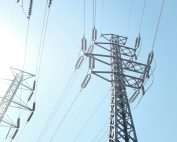NKT has delivered the first order for its new Adaptive Rigid Sea Joint to the Danish transmission system operator (TSO) Energinet. The innovative power cable joint allows Energinet to optimize inventory and minimize waste as the joint can be adapted for several cable types from different suppliers.
The Adaptive Rigid Sea Joint developed by NKT can lead to reduced costs of storage, fewer spare parts and less inventory for offshore cable owners as it is compatible with several power cable types. The adaptive joint is well-suited as a straight joint for a repair on any of the approximately 350 kilometers of HVAC offshore cables in Energinet’s grid. With a transmission grid comprising many different and relatively short HVAC power cable connections, Energinet is ideally positioned to take advantage of the new joint.
– We are proud to provide this new solution to Energinet, which is a long-standing partner to NKT. By delivering the Adaptive Rigid Sea Joint we are solving a challenge in the market and the contract with Energinet is a testament not only to the strong collaboration between our companies but also to their commitment to jointly optimize performance and sustainability of their activities, says Rico Bruus, Director, Head of Service Denmark at NKT.
Joint designed for multiple types of power cable systems Traditional offshore repair joints are designed for the specific system they are intended for, resulting in dedicated spares being stocked for every cable design in an operator’s grid. However, with operators often owning multiple different cable systems and failures of each individual cable occurring very rarely, many of the spares remain in stock unused for many years. This leads to high costs associated with procuring and storing the spares, as well as increasing waste from perishable components that must be periodically replaced if not used.
To address this, NKT has developed the Adaptive Rigid Sea Joint, which can serve as a spare joint for a broad range of HVAC offshore cables. The joints utilize a platform of base components, which can be shared across cable types. This reduces the number of spares required in stock, while reducing the need for their replacement due to expiry.
– We are very satisfied with the ongoing cooperation with NKT. The delivery of the Adaptive Rigid Sea Joints will improve our spare parts strategy resulting in reduced costs and waste while improving the resilience of our offshore grid infrastructure. Although we hope we will only need them sparingly, we are happy we can now rely on NKT’s experience and capabilities in the area of repair of offshore cables from different suppliers, says Rene Dogan, Offshore Cable Specialist at Energinet.
The use of the Adaptive Rigid Sea Joint spans voltage levels from 132 kV through 150 kV up to 300 kV and covers more than 10 power cable designs from various manufacturers. The joints can also be expanded further to cover additional cable designs or transitions between different types.
Source: NKT














